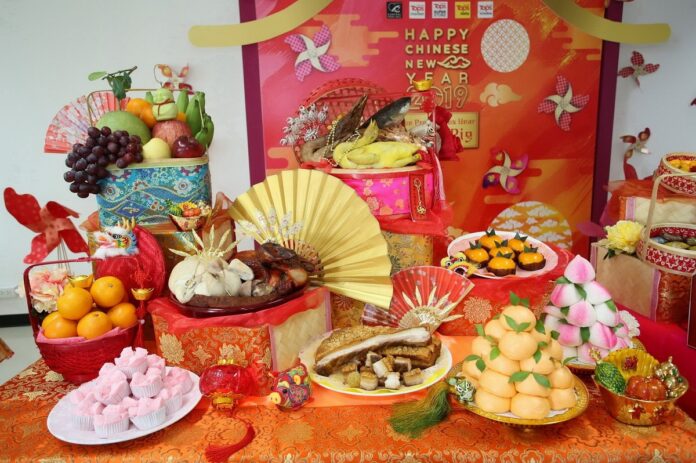
BANGKOK — You’ve seen them everywhere comes Chinese New Year – those pink fluffy flour, gluey rice wrapped in banana leafs, boiled poultry, and other foodstuff associated with the occasion, but you might not know what they are, or their meaning.
Here’s a quick guide to the festive food that’s become a common sight across Thailand as the Thai-Chinese communities welcome the Year of the Rat.
Kanom Pia (ขนมเปี๊ยะ) or Bing

This flattened flour disk snack is often filled with salted egg yolk or yellow beans, and stamped with a lucky Chinese character in red color.
The Thai versions also come in the shape of buns. They have a variety of fillings, such as taro, Thai tea, foi tong golden thread desserts, and so on. Some are even smoked with candle smoke to give the snack a fragrant, smoky aroma.
Salapao (ซาลาเปา) or Baozi
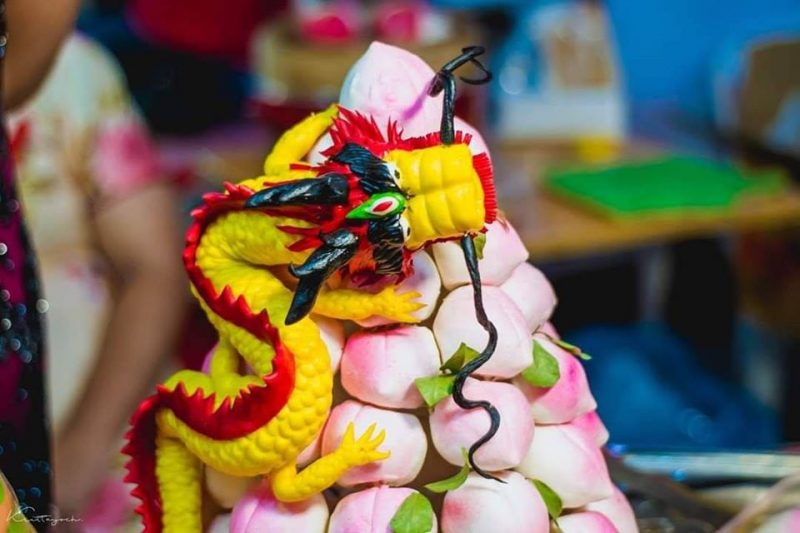
These steamed buns, while eaten year-round at Chinese restaurants, are favorite offerings during Chinese New Year since they symbolize luck and “wrapping up wealth” for one’s descendants.
Some salapao are shaped like peaches and filled with sweet green bean paste to signify longevity. One shop in Nakhon Sawan made the news for making dragon-shaped salapao.
Kanom Keng (ขนมเข่ง) or Nian Gao
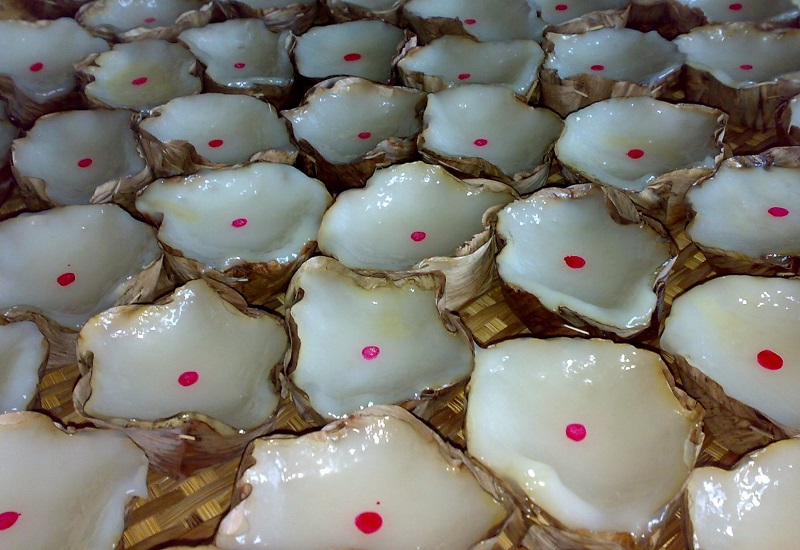
This glutinous rice cake, which symbolizes sweetness and wholeness, is eaten in Chinese and Southeast Asian celebrations of Chinese New Year. In Thailand, they’re called kanom kheng and served in little banana leaf boats.
The dot of food coloring on top is to add an auspicious red to offset the white – pure white foods are reserved for somber occasions like funerals.
Another similar snack, kanom tian, is pyramid-shaped rice cake wrapped in banana leaves and filled with sweet or savory fillings. Kanom tian is usually served together with kanom keng.
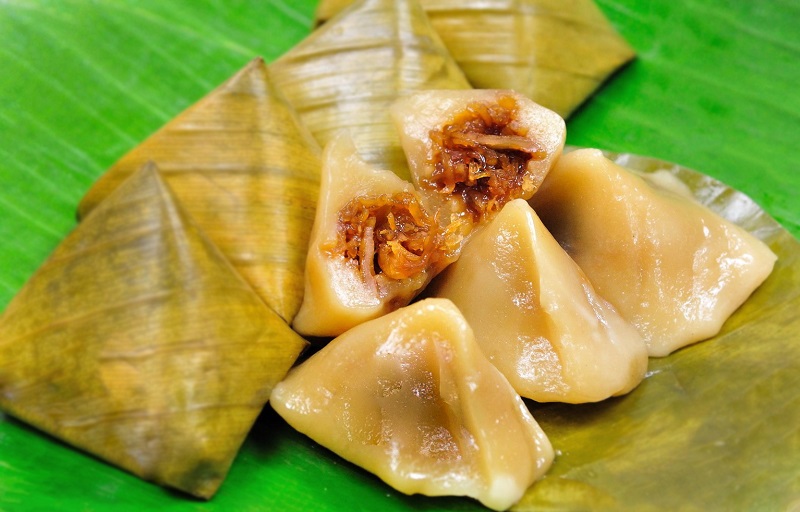
Kanom Pui Fai (ขนมปุยฝ้าย) or Fagao
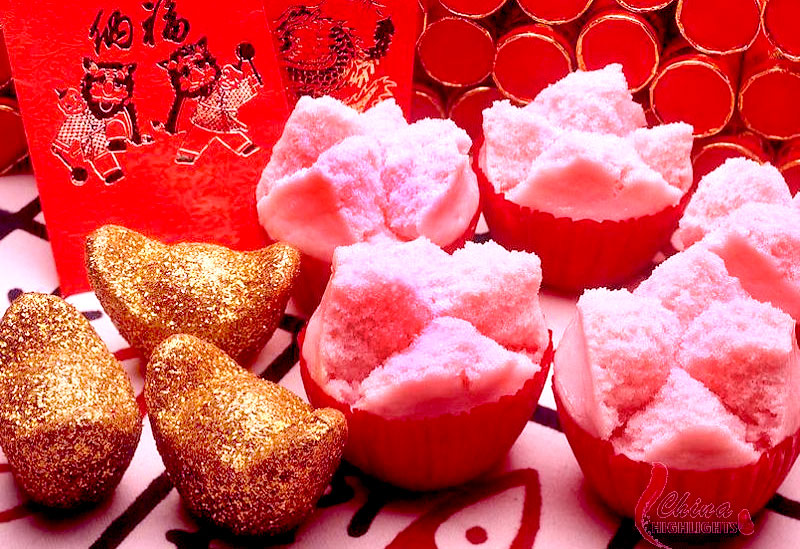
May your life prosper and rise up in life as much as this steamed cake! Kanom Pui Fai is made of steamed rice flour and represents prosperity.
In Thailand, they’re often seasoned with jasmine flower or pandan scents and baked in various shades of pastel. Some are even baked with flower or fruit patterns, such as these watermelon and dragonfruit-themed ones.
Kanom Chan Up, Kanom Jub Kum, or Kanom Tae Leaw (ขนมจันอับ ขนมจับกิ้ม แต้เหลี้ยว)

“Chan Up” is a bastardization of the Teochew dialect word for the name of a box of dried assorted candies offered to spirits during seasonal festivities. They were introduced to Thailand by Chinese workers as early as the Ayutthaya era.
A set of kanom chan up is filled with sweet snacks such as tua tud peanut bars that symbolize wealth as they resemble gold ingots, sesame bars, sugared nuts, candied pumpkin, and rice puffs.
The sweet snacks hope to bring a similar sweetness to the worshipers’ lives, which is why kanom chan up in popular both at Chinese New Year and weddings.
Kanom Ko (ขนมโก๋)

Another Teochew Chinese snack, kanom ko comes in two forms: flattened discs and mooncake-like shapes with bean or sesame fillings. Kanom ko with durian fillings are common in Thailand.
The surface is often printed with Chinese characters, patterns or flowers. Due to their white, flat shape, they’re also eaten during the Mid-Autumn Festival.
Lucky Fruits
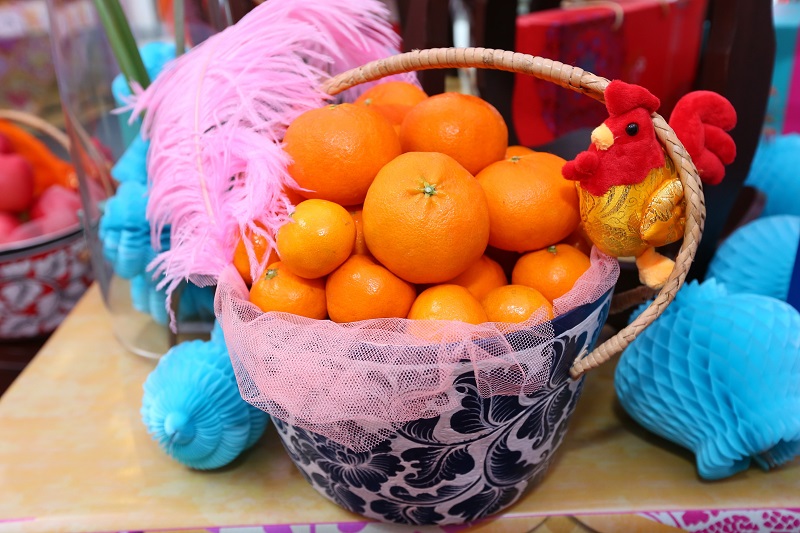
Like other Chinese New Year celebrations worldwide, oranges symbolize luck and wealth. Other fruits also considered suitable for the occasion in Thailand include apples, pears, and grapes.
Savory Food for Prayer
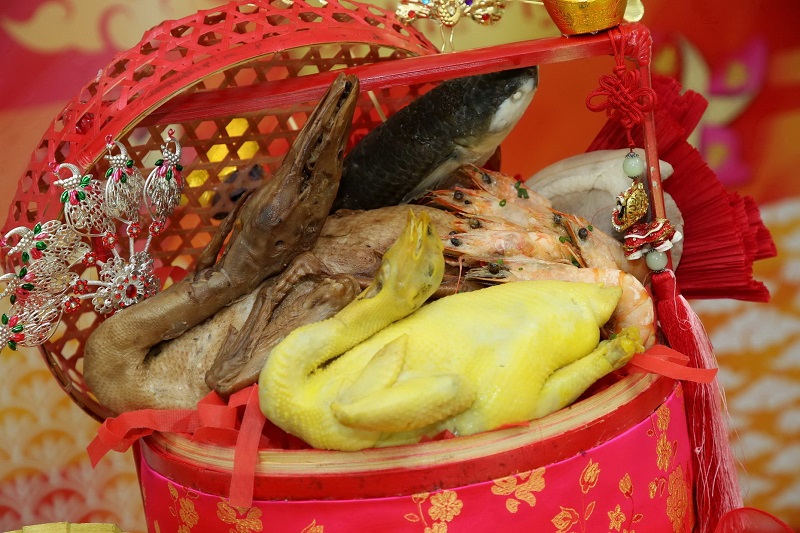
A whole poached chicken is served, as it is in Chinese communities elsewhere, to represent completeness, togetherness, and career advancements.
Fish, duck, and octopus are also used for the same reasons. Long noodles represent longevity, black seaweed wealth, and lotus seeds the traditional Chinese wish for many sons.
Related stories:














































